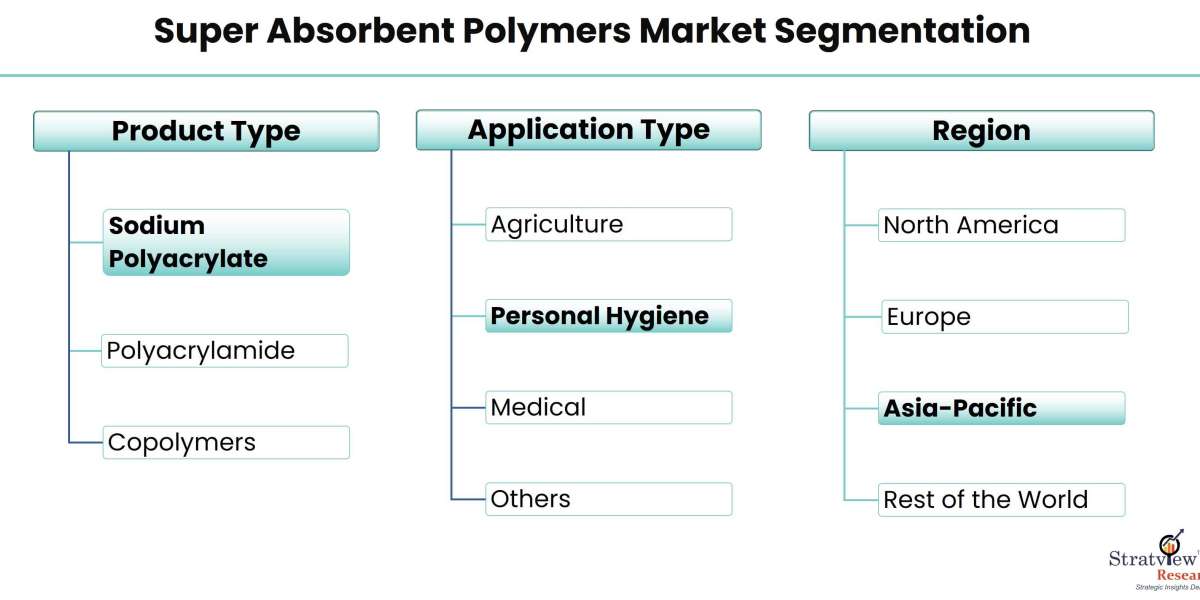According to Stratview Research, the super absorbent polymers market was estimated at USD 10.38 billion in 2022 and is likely to grow at a CAGR of 5.82% during 2023-2028 to reach USD 14.61 billion in 2028.
In the ever-evolving landscape of materials science, Super Absorbent Polymers (SAPs) have emerged as unsung heroes, transforming industries and redefining our approach to liquid management. From diapers to agriculture, these hydrophilic marvels have demonstrated unparalleled water-absorbing capabilities. As we delve into the future prospects of Super Absorbent Polymers, it becomes clear that they are not just soaking up moisture; they are paving the way for dryer days, offering solutions to a myriad of challenges in diverse sectors.
Expanding Applications Beyond Diapers:
While SAPs initially gained recognition for their role in creating more efficient and comfortable diapers, the future prospects of these polymers extend far beyond the realm of personal care products. The versatility and efficacy of SAPs are driving exploration into diverse applications:
Agriculture: SAPs are increasingly becoming key players in sustainable agriculture. The ability of these polymers to retain water in soil is revolutionizing irrigation practices, contributing to water conservation, and enhancing crop yields. Future applications may include tailored formulations for specific crops and climates.
Medical Advancements: The medical field continues to unlock the potential of SAPs, particularly in wound care and medical dressings. As technology advances, we can anticipate more sophisticated applications in medical settings, with SAPs contributing to advanced wound healing and moisture management.
Construction Industry: SAPs are making inroads into the construction sector, enhancing the properties of construction materials like concrete. The future could see widespread adoption of SAPs to improve the durability and strength of building materials, creating structures that are more resilient to environmental conditions.
Environmental Solutions: As the world grapples with environmental challenges, SAPs offer potential solutions. Their application in soil erosion control and environmental cleanup projects could become more prominent, showcasing their versatility in addressing broader ecological concerns.
Technological Innovations Driving Future Growth:
The future prospects of Super Absorbent Polymers are intricately tied to ongoing technological innovations. Researchers and manufacturers are investing in advancements that promise to redefine the capabilities and applications of SAPs.
Nanostructured SAPs: Nanostructured SAPs represent a frontier in material science. The development of SAPs at the nanoscale opens new possibilities for enhanced absorbency, responsiveness, and even more sustainable formulations.
Smart Polymers: The integration of smart polymer technologies into SAPs could revolutionize their functionality. Smart polymers respond to external stimuli, such as temperature or pH changes, allowing for more controlled and targeted release of absorbed liquids.
Biodegradable Formulations: The drive toward sustainability is steering the development of biodegradable SAPs. Future formulations may prioritize materials that break down more readily, addressing concerns about the environmental impact of traditional SAPs.
Addressing Global Water Scarcity:
One of the most significant future prospects for SAPs lies in their potential to address global water scarcity challenges. By optimizing their use in agriculture, SAPs can contribute to more efficient water management, ensuring that limited water resources are used judiciously for crop cultivation. This has profound implications for regions facing water scarcity, where SAPs could play a pivotal role in ensuring food security.
Challenges and Considerations:
While the future of Super Absorbent Polymers looks promising, it is not without challenges and considerations. As the demand for SAPs grows, stakeholders must navigate issues related to:
Cost-Efficiency: Balancing cost-efficiency with performance remains a key consideration. Future advancements should aim to make SAPs more economically viable without compromising their water-absorbing capabilities.
Environmental Impact: Continued efforts are needed to mitigate the environmental impact of SAPs. Biodegradability, responsible disposal practices, and sustainable sourcing of raw materials are critical aspects that warrant ongoing attention.
Regulatory Compliance: The regulatory landscape for polymers is evolving. Future prospects hinge on ensuring that SAPs comply with emerging environmental regulations and standards, ensuring their safe and responsible use across industries.
Conclusion:
As we anticipate dryer days ahead, the future prospects of Super Absorbent Polymers paint a picture of innovation, sustainability, and transformative solutions to global challenges. From enhancing agricultural practices to contributing to medical advancements and environmental solutions, SAPs are poised to play a crucial role in shaping a more resilient and water-conscious future.
Paving the way for dryer days is not just about managing moisture; it's about harnessing the potential of Super Absorbent Polymers to create a more sustainable and efficient world. As technology propels these polymers into new frontiers, the journey of SAPs is set to be a dynamic and impactful one, leaving an indelible mark on industries and ecosystems alike.








